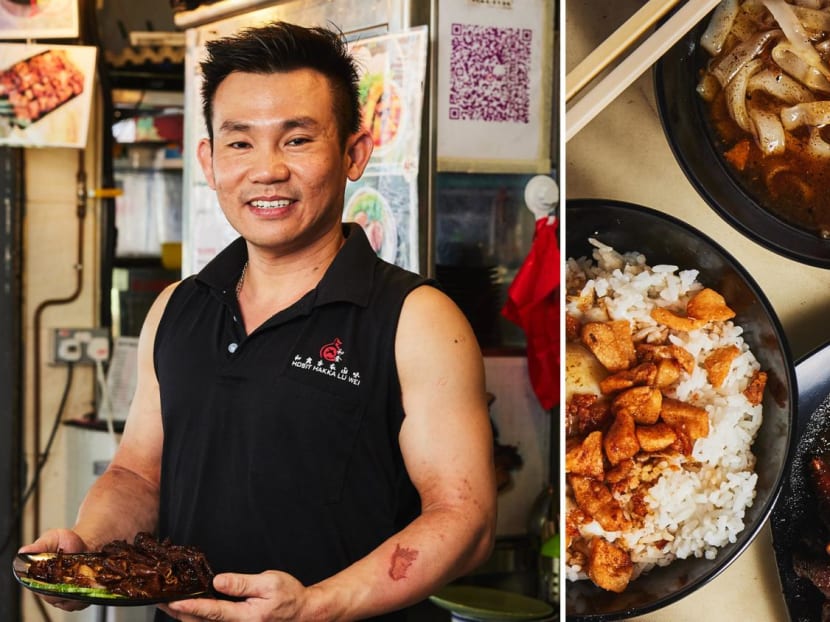Melaka-Born Hawker Sells Herbal “Hakka-Style” Kway Chap & Shiok Pork Lard Rice With Egg
Hakka Lau Wei also offers a dry version of kway chap. Sort of.
Kway chap, with its slippery broad rice noodles and pig’s offal in a dark soy braise, is a common dish in Singapore. Its origins are typically attributed to Teochew migrants who brought it from the Chaoshan region of China. But Melaka-born John Lau of Hakka Lau Wei (a pun on his surname and lou wei, which refers to braised dishes in Mandarin) claims to have a kway chap recipe unique to his family’s Hakka heritage. “Unlike a typical Teochew braise which is salty-savoury, ours has a stronger [herbal fragrance] and sweetness,” the 39-year-old tells 8days.sg.
Clad in a sleeveless tee showing of his jacked arms, the brawny hawker runs his two-month-old stall in a quiet coffeeshop along Guillemard Road, Geylang, where he serves an array of pork cuts like offal, trotters and ears, alongside kway teow kia (thin rice noodles) instead of the usual broad sheets in a herby broth. Other sinful pairings include an unusual dry version of kway, as well as a rice bowl topped with a soft-boiled egg and lots of lard crisps.
No part of this story or photos can be reproduced without permission from 8days.sg.
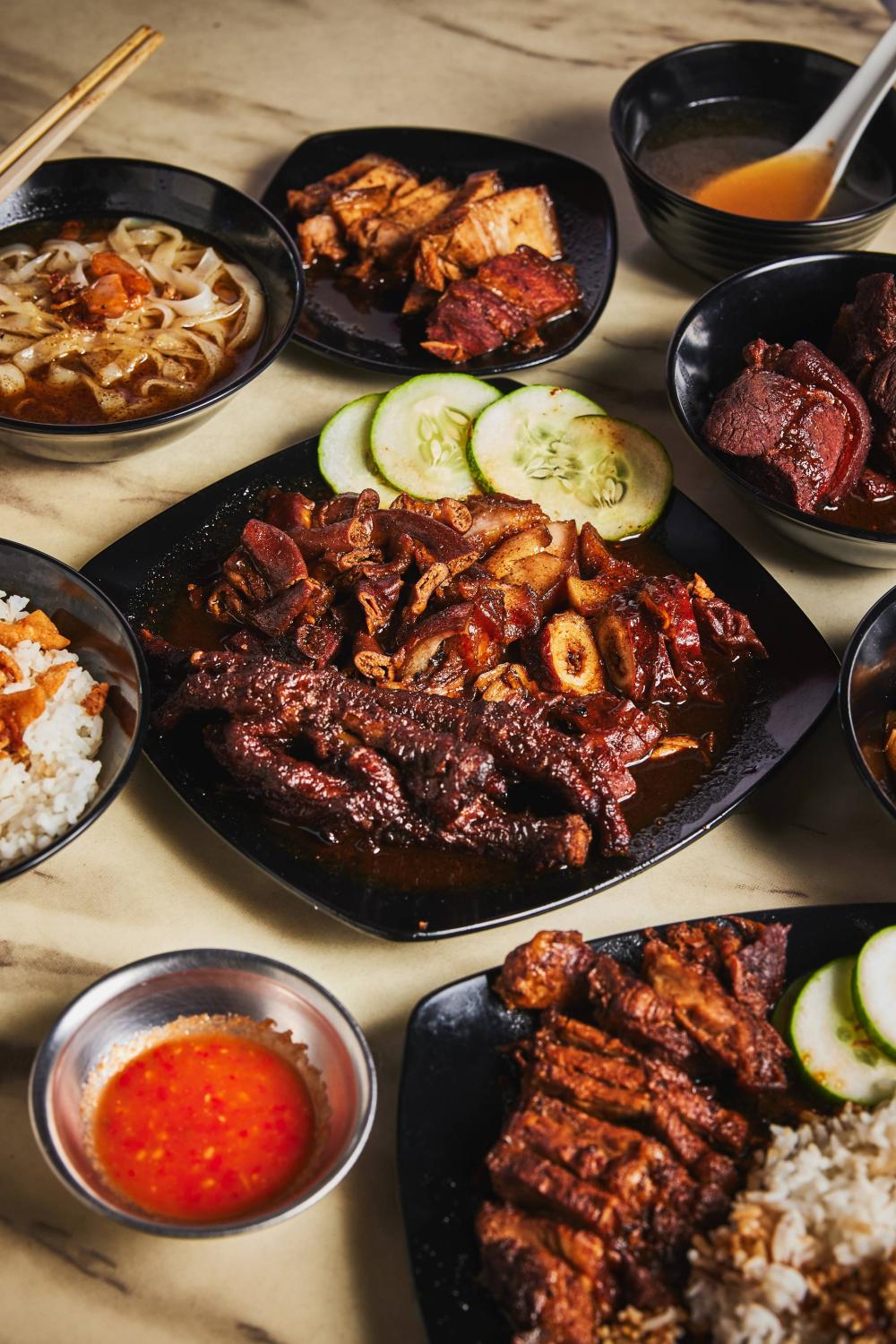
Fourth-generation hawker
According to the hawker, the origins of his Hakka braised meat recipe stretches back to his Hakka great-grandfather’s birthplace in Shanwei, a city in eastern Guangdong, China. “It is south of Shantou and Chaozhou, where there are many Teochews. That is probably why [my Hakka ancestors] were influenced to cook this dish,” he explains.
Once his great-grandfather migrated to Malaysia some “40 years” ago, he began selling a variation of the dish at a stall in his “kampong” with his wife. “My great-grandmother was a nyonya, so she added her own influences to the recipe too,” says John. Ingredients that he says makes his family’s braise, which has “16” components, stand apart from the competition include galangal and coconut sugar, plus herbs like lemongrass.
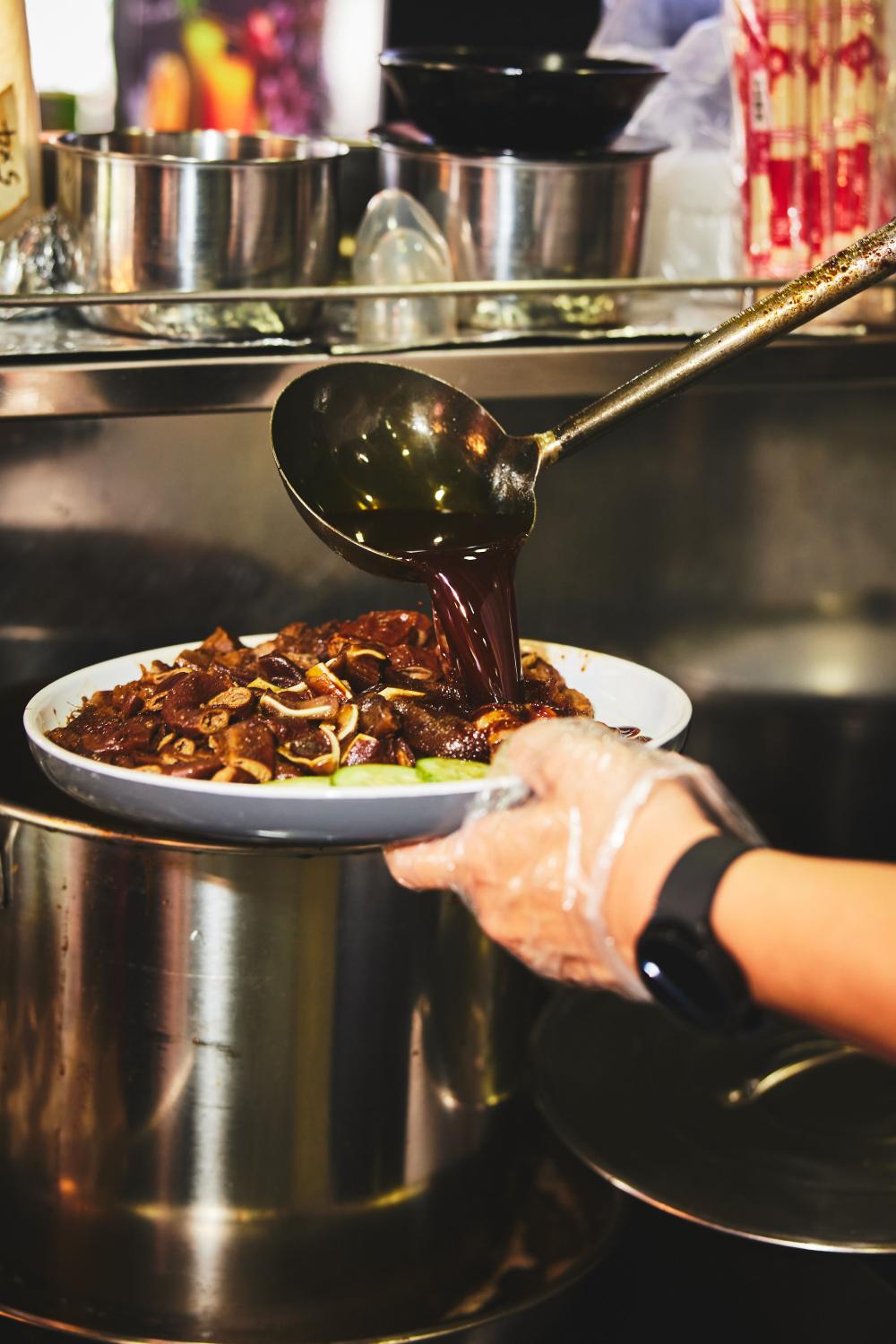
Only joined hawker trade three years ago
Over the years, the family stall was passed down to John’s grandfather, then father, before finally reaching his younger brother who now runs the 60-year-old biz under the name Hakka Lu Wei in Melaka. As it turns out, John never intended to take over the family biz – or become a hawker at all.
“I’ve helped out since young – my father started me on chopping meat when I was still in primary school – but I originally didn’t want to be a hawker. I did not like the job – I saw my father working every day from 4am until late at night. It was very tough for him,” he explains.
Instead, he flitted from job to job in his younger days, working as an insurance agent, a supervisor at a surveying company, a farm hand in Australia, and a Grab driver. He also found time to practice martial arts like wushu and karate – the latter, up to a “black belt, first dan (which denotes a sub-level within the rank of black belt)”.
“It was only in 2019 after my dad passed on that I began to look at this job seriously – to carry on our family legacy,” he says. “It felt like it would work as a business [with potential for expansion], as Hakka kway chap can hardly be found in Malaysia or Singapore.” His hunch worked out well: Hakka Lau Wei has grown from one to four locations in Melaka (two of which are franchisees) within a few years.
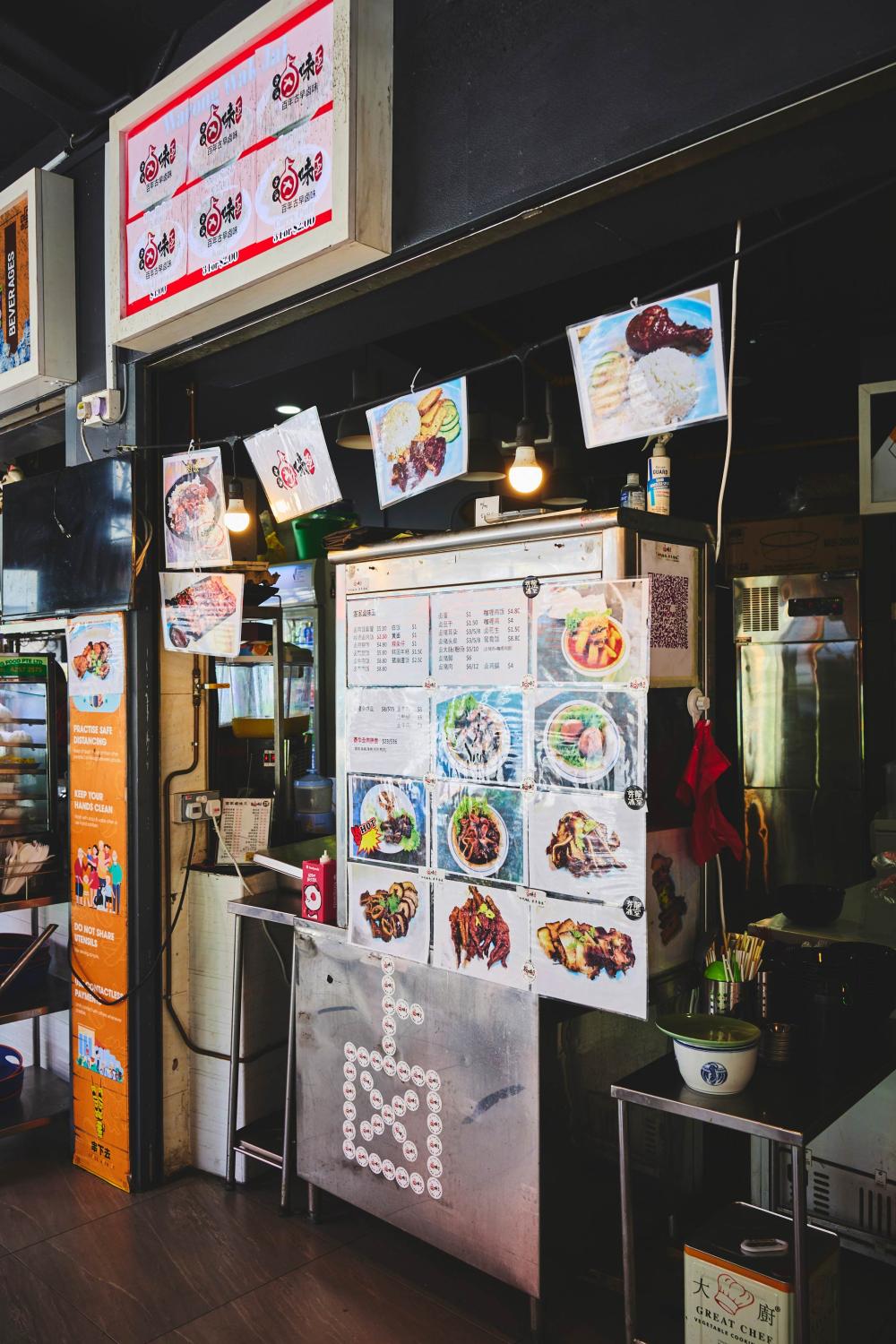
Hopes to open multiple outlets in Singapore
John decided to expand to Singapore after its borders reopened. He partnered Klay Chin, a 26-year-old Singaporean citizen whose family came from the same Malaysian village as him. The younger hawker operates the kopitiam that Hakka Lau Wei is housed in with his older bro (who also happens to be John’s buddy).
“We’re all from the same kampong, and I know he has a sharp mind for F&B. We’re hoping to open a few outlets here – definitely some franchises as well,” says John. The pair sunk around $30K to get Hakka Lau Wei up and running. The kopitiam is relatively quiet apart from a handful of customers during our visit on a Thursday afternoon, though we’re told it gets busier in the evenings once more stalls open.

Works out every day
While the hawker no longer has time to practice martial arts, he maintains his impressive physique by hitting a nearby gym for “around 90 minutes” after closing up at midnight daily. “It is tiring of course, but once you’ve started something, it’s hard to give it up. I believe in a healthy lifestyle – it’s important to have a healthy body as a hawker,” he says. He wakes up at 10am daily to start cooking at his stall. When we point out the irony of a buff hawker selling rather decadent fare like pig’s innards, he replies with a wink, “Once in a while, [eating kway chap] is okay lah.”
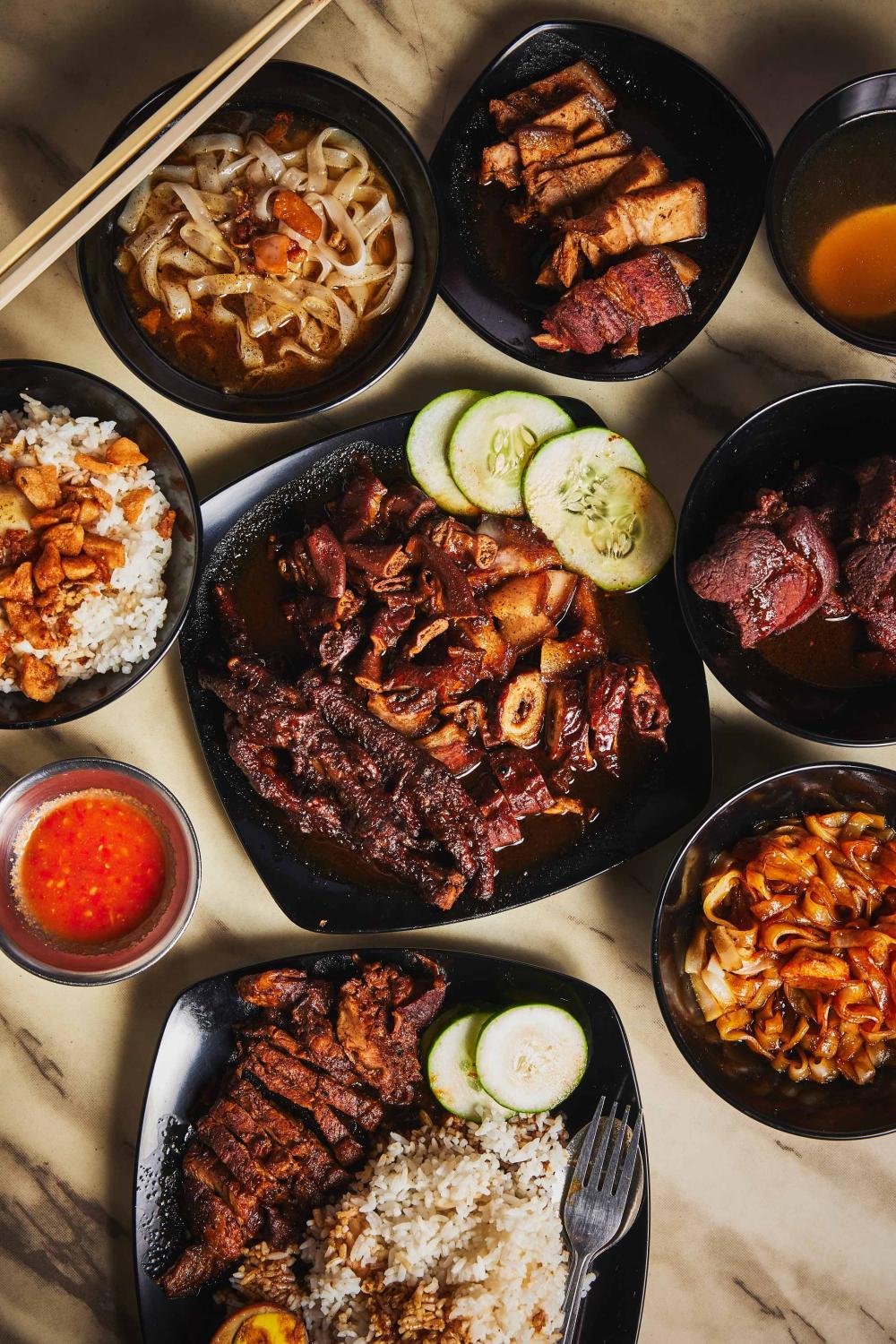
The menu
Oddly, the stall doesn’t serve an individual kway chap set. The smallest platter for two starts at $8, with a bowl of kway at an extra dollar each – just tell John which pig innards you want, and he’ll mix and match the offal accordingly. “It’s a business decision,” insists Klay, who directs solo customers to order offal a la carte (from $3) or opt for rice sets (from $4.80 to $8.80).
Apart from the usual pork, Hakka Lau Wei also sells braised lamb, beef, chicken and duck (available a la carte or with rice). “It is something I was experimenting with here – I’m hoping to create a halal spinoff at some point in the future,” he explains.
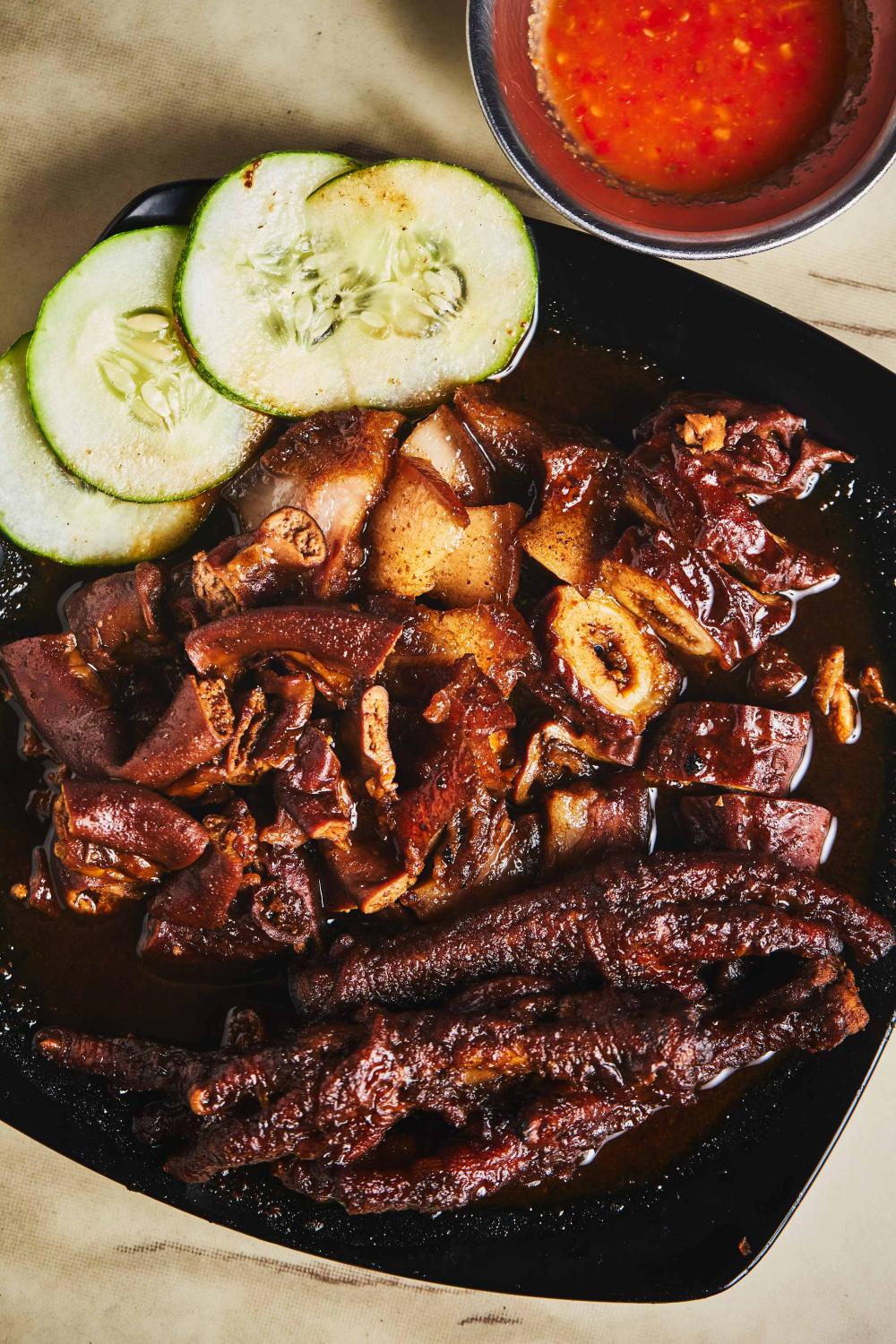
Mixed Platter, from $8 (8 DAYS Pick!)
While most kway chap stalls we’ve been to braise their meats daily, John preps larger batches and stores them in a freezer for “two to three days”. “I tested this out during Covid in Malaysia, when we started selling ready-to-cook braised meat for people to reheat at home. The taste or texture doesn’t deteriorate this way,” he insists.
To his credit, the offal in the mixed platter fare well, even after their time on ice. The slices of pig’s head (zhu tou pi in Mandarin) are bouncy with a springy bite, while the rectum (aka da chang tou) and sweet intestines are tender, succulent and funk-free. The fork-tender chicken’s feet don’t disappoint either.
The swarthy “Hakka-style” braise is a tinge sweeter than we’re used to, with notes lightly reminiscent of Chinese herbs and black pepper. While we usually prefer a braise with lots of savoury oomph – think Michelin Bib Gourmand recipient To-Ricos Guo Shi or cult fave Feng Ji Kway Chap – Hakka Lu Wei’s version manages to strike an agreeable balance between sweet and savoury. Paired with the nicely vinegary chilli sauce, the immaculately braised QQ innards make for a yummy treat.
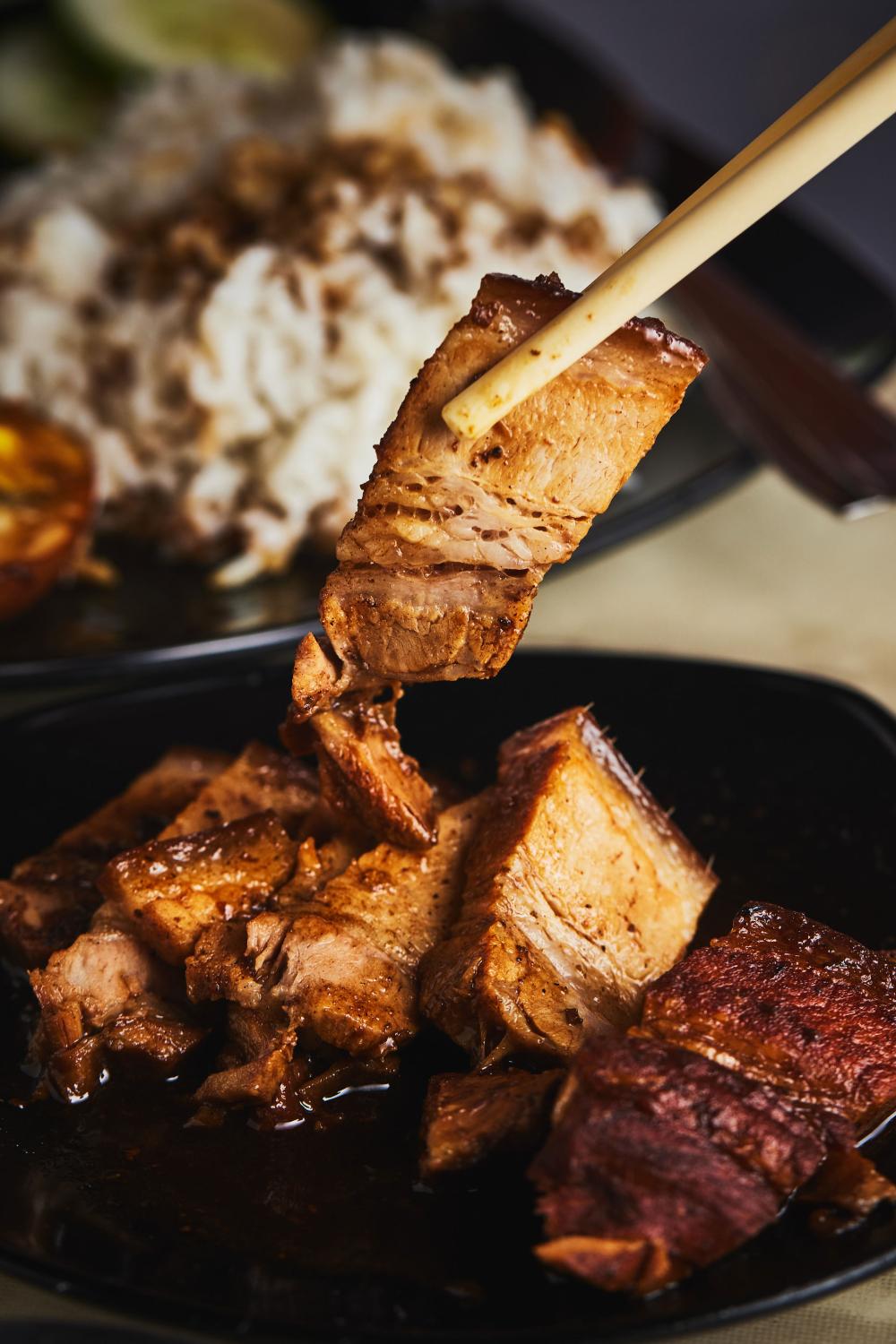
Braised Pork Belly, $6
However, not all of their braised meats are as juicy. The pork belly is decently soft, but the lean bits are dry.
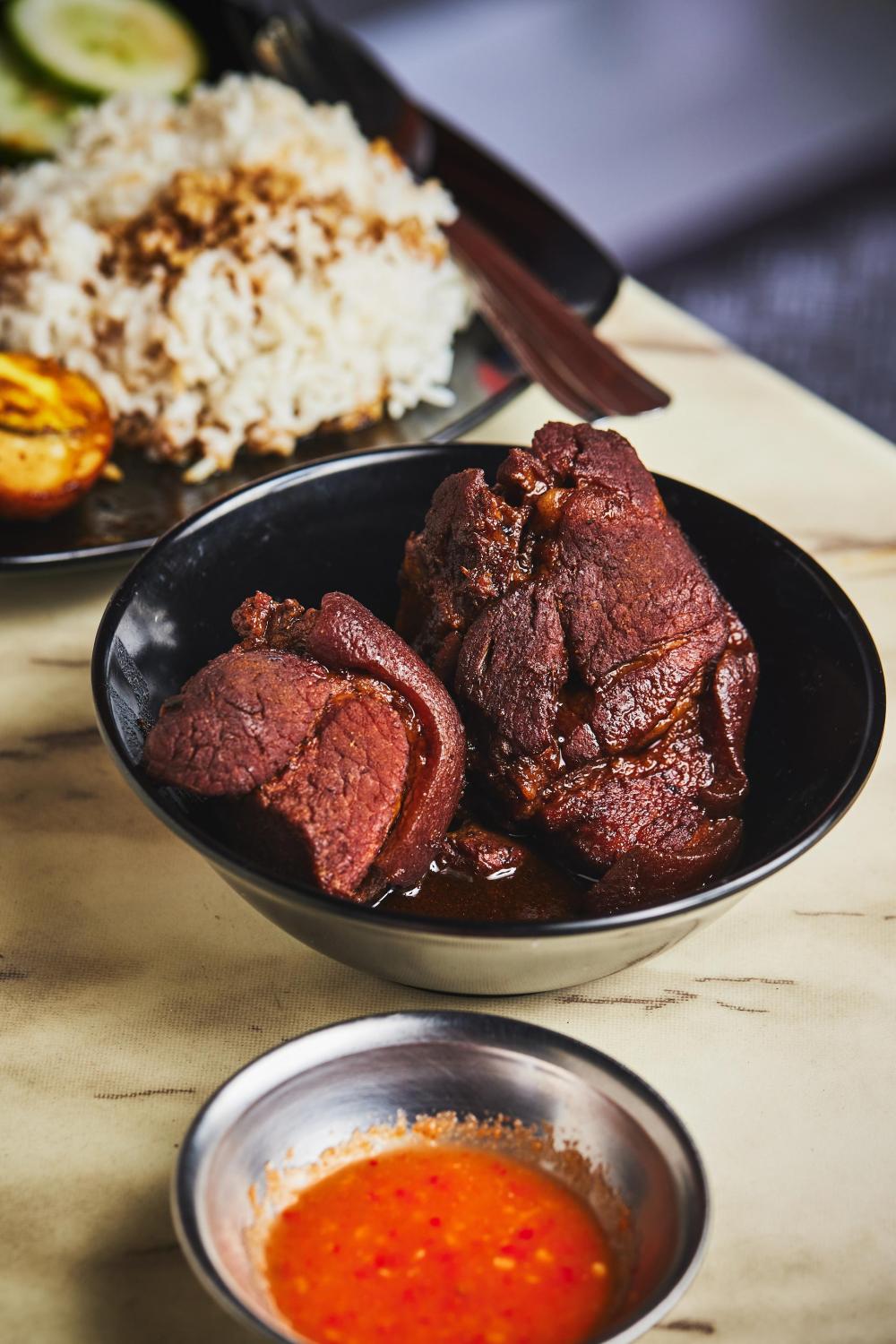
Braised Pig’s Trotter, $6
This pig’s trotter is also on the drier side and rather tough, despite being braised for about “one hour and 20 minutes”. Perhaps John’s shortcut method of freezing the pork takes a bigger toll on some of the cuts than he might think.
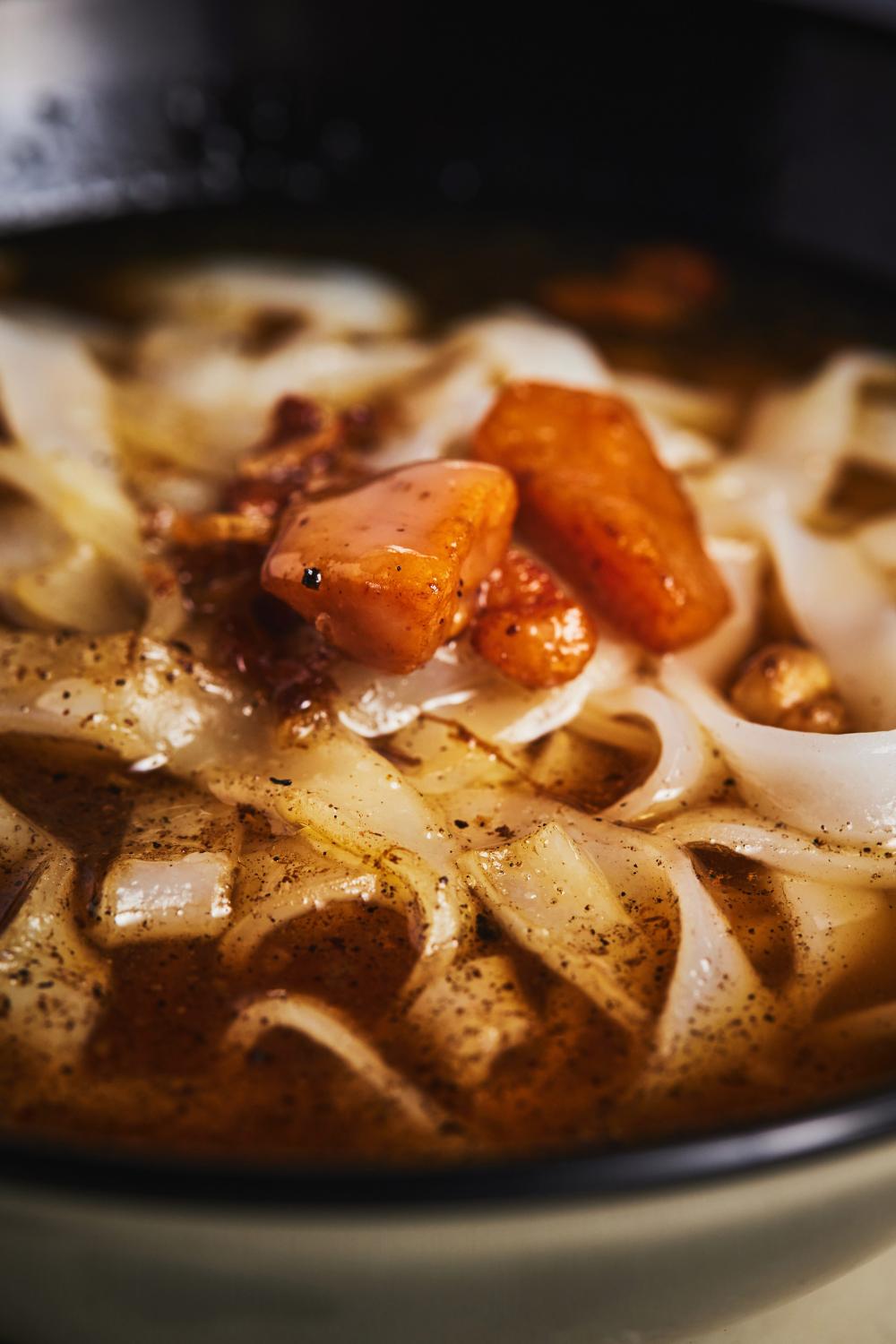
Kway (soup or dry), $1
Hakka Lu Wei offers two versions of kway, both featuring kway teow kia. The soup version pairs a splash of that sweet-savoury braising sauce with pork bone broth boiled with herbs like woody dang gui. While we personally prefer kway teow kia to the usual broad kway as we think it sops up the accompanying broth better, we don’t really dig Hakka Lu Wei’s version — its broth has an overly herby profile that’s a tad overpowering after just a couple of slurps.

We prefer their tastier ‘dry’ version, which comprises slippery kway teow kia tossed in an unfussy mix of garlic oil, dark and light soy sauce, and lots of lard – simple but shiok. “We don’t have a dry version in Melaka,” replies the hawker with a laugh when we ask about why he decided to serve this unusual variation of the dish. “I wanted to test it out here, to give some more options for customers who aren’t yet used to our food.”
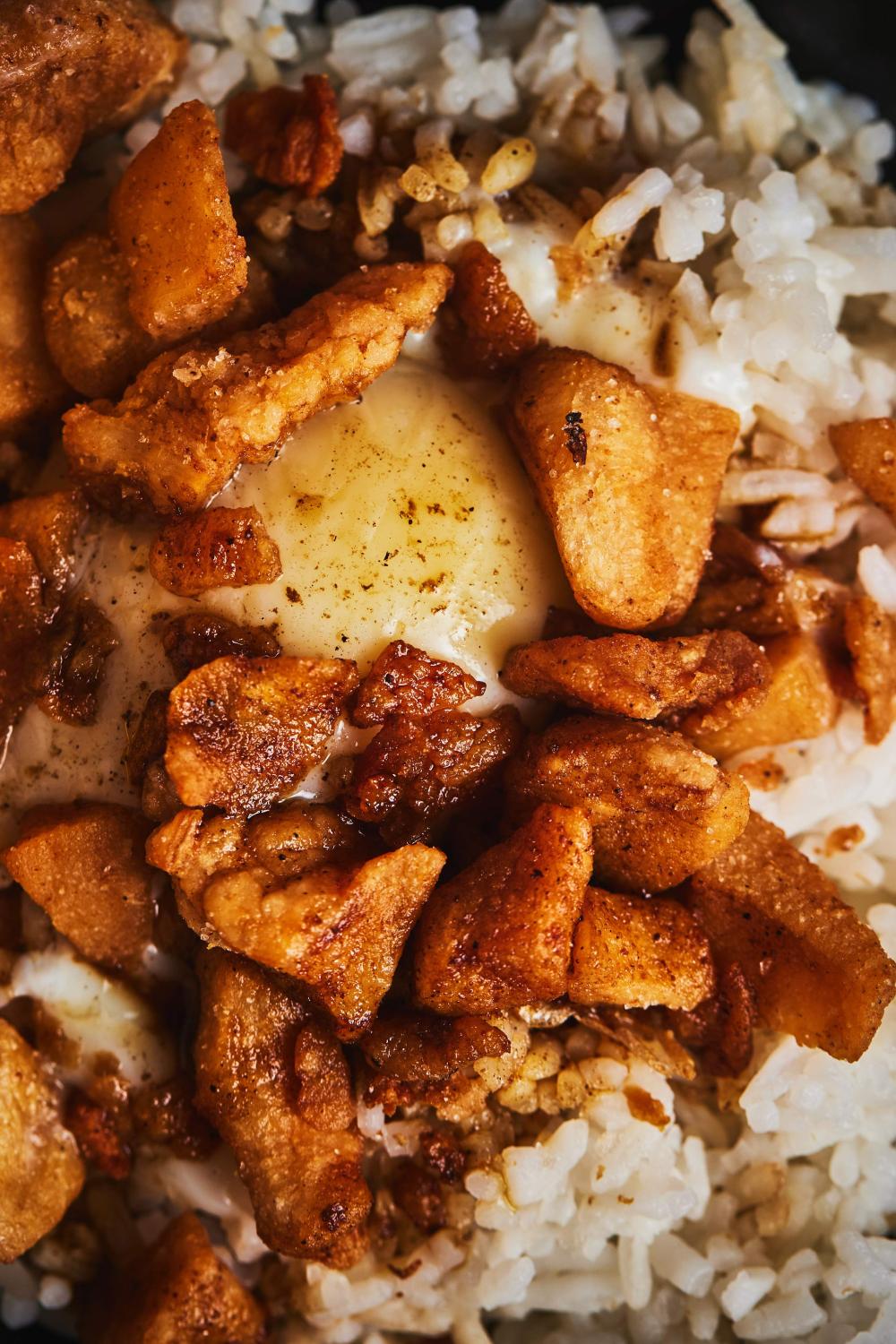
Pork Lard Rice, $1.50 (8 DAYS Pick!)
A super sinful combo of salted lard crisps, a soft-boiled egg and some braising sauce on hot rice that we find very addictive. Pop the gooey egg so its velvety yolk oozes all over the bits of crunchy lard. Yum.
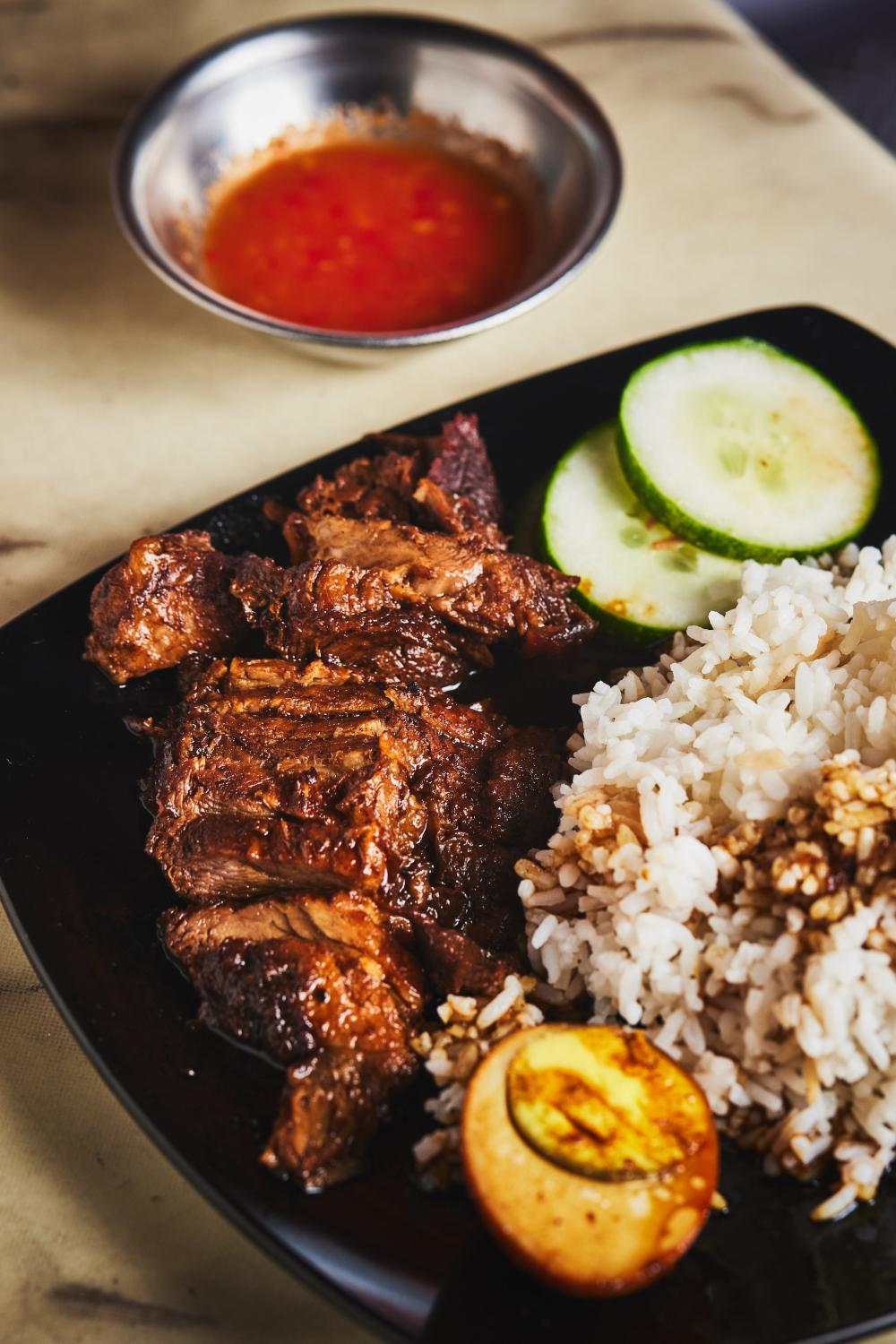
Braised Beef Rice, $8.80
All rice sets are served with half a braised egg and slices of cucumber. While it is uncommon to have braised beef shank at a kway chap stall, we find the sweet, herby braise robust enough to stand up to the meaty flavours of the toothsome slices of pleasantly tender beef shank. The verdict is still out on the lamb (which is typically gamier) version as it was sold out during our visit.
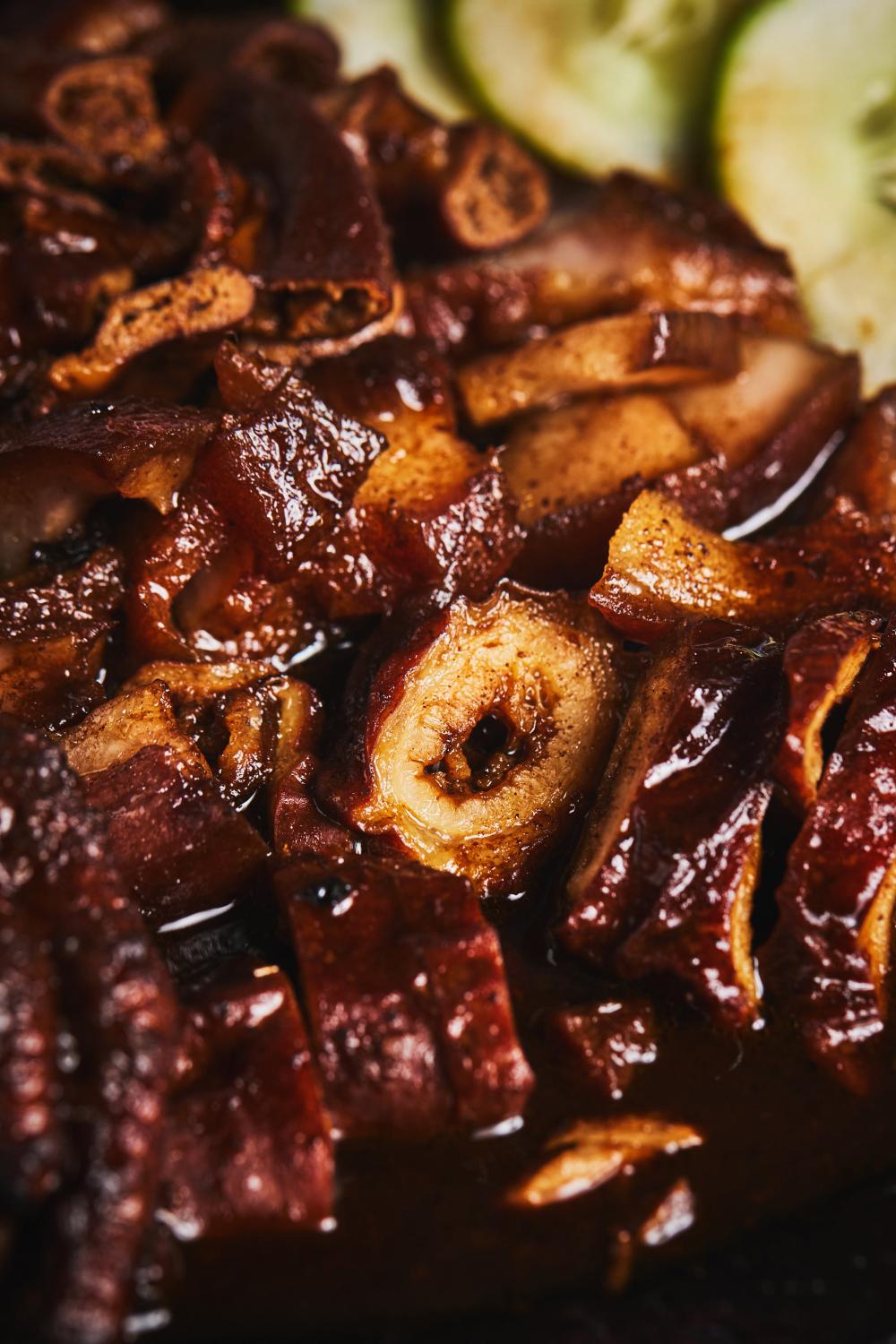
Bottom line
While we enjoyed Hakka Lau Wei’s toothsome pig’s innards soaked in a pleasantly sweet-savoury soy braise, we aren’t as fond of the overly herbaceous broth its rice noodles are served in. We’d rather pair the offal with the yummy dry noodles here instead, or the sinfully delicious pork lard rice.
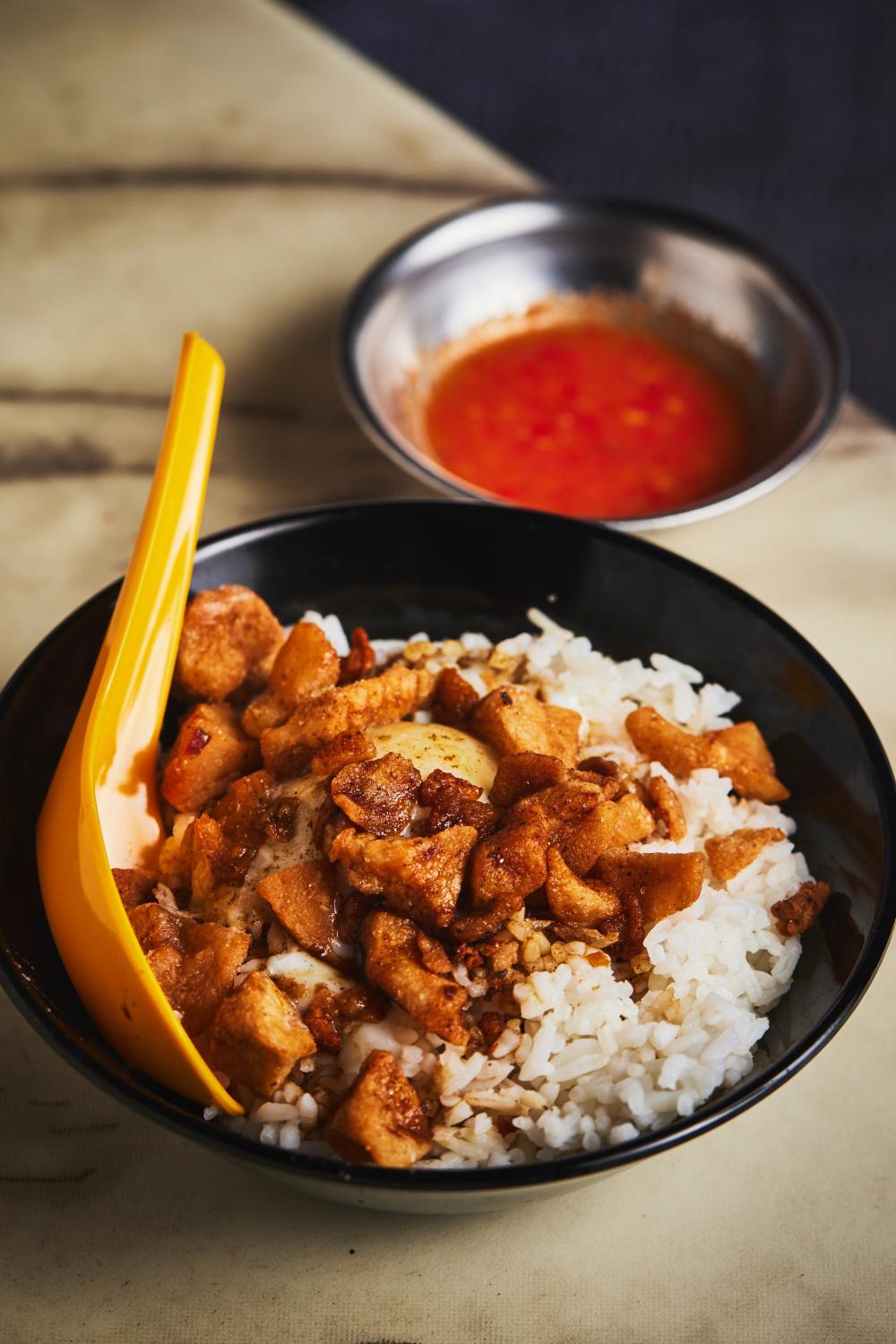
The details
Hakka Lau Wei is at 51 Guillemard Road, SWI F&B coffee shop, S399705. Tel: 9030-6531. Open Mon – Thur, 11am – midnight; Fri – Sat, 11am – 2am. More info via Facebook.
Photos: Alvin Teo
8days is now on #tiktok! Follow us on www.tiktok.com/@8dayseat
No part of this story or photos can be reproduced without permission from 8days.sg.

